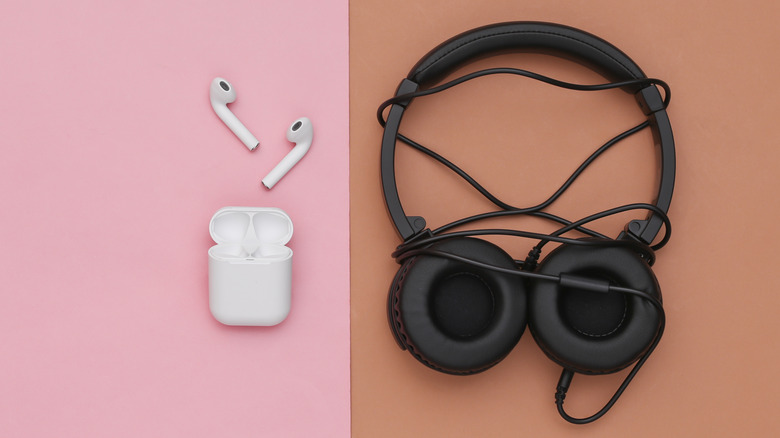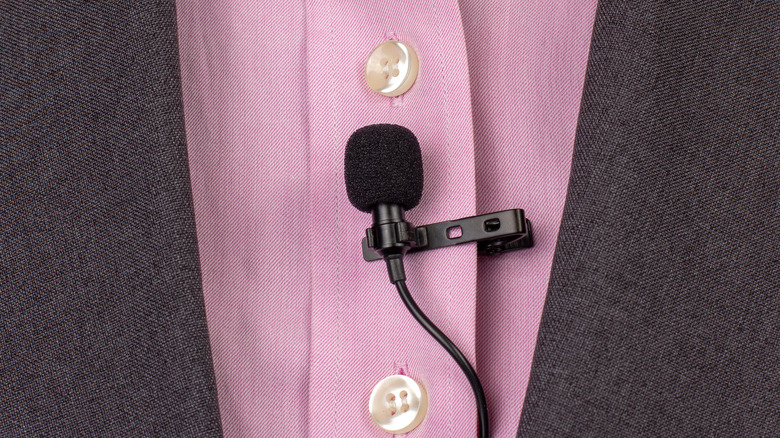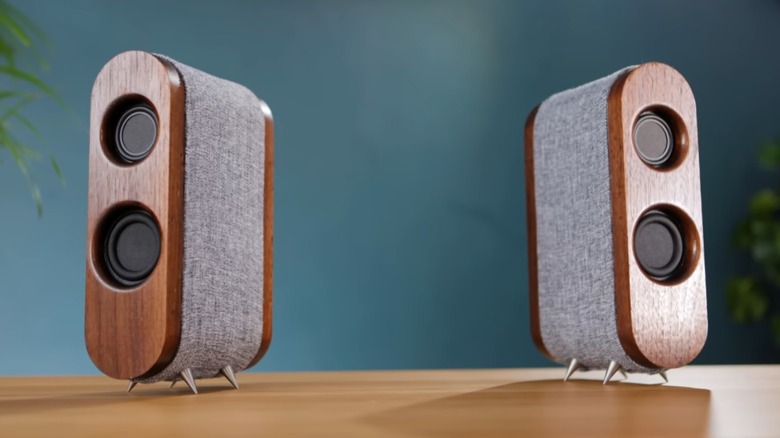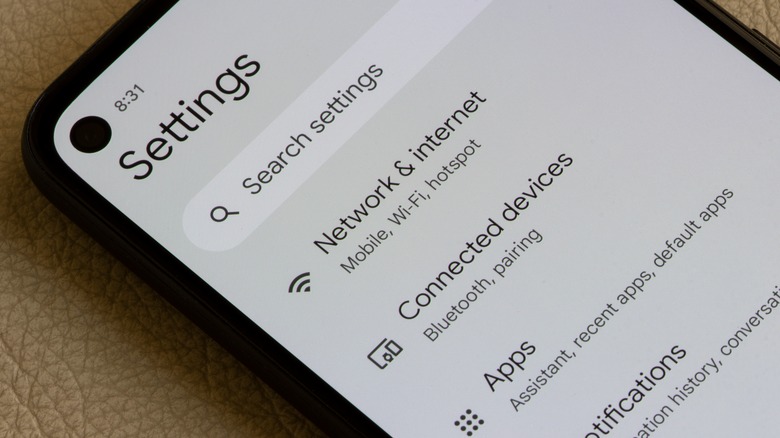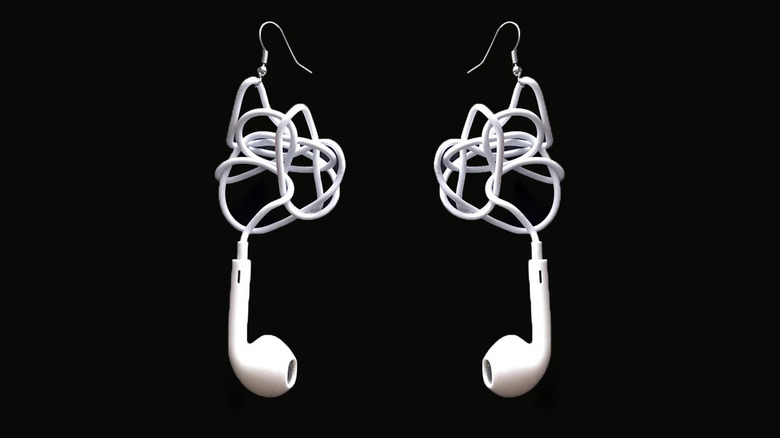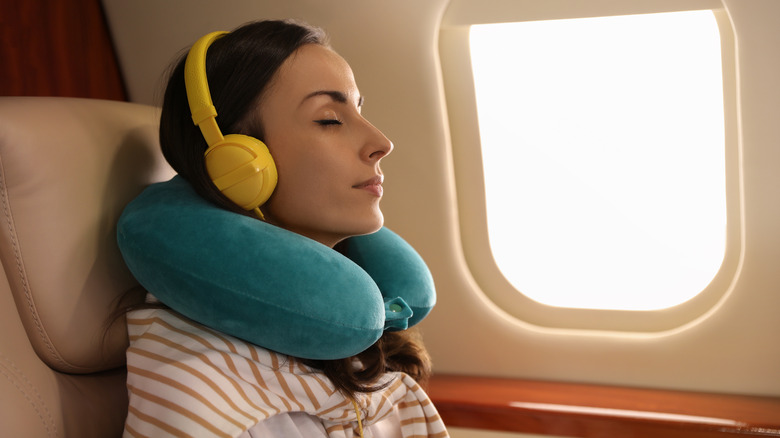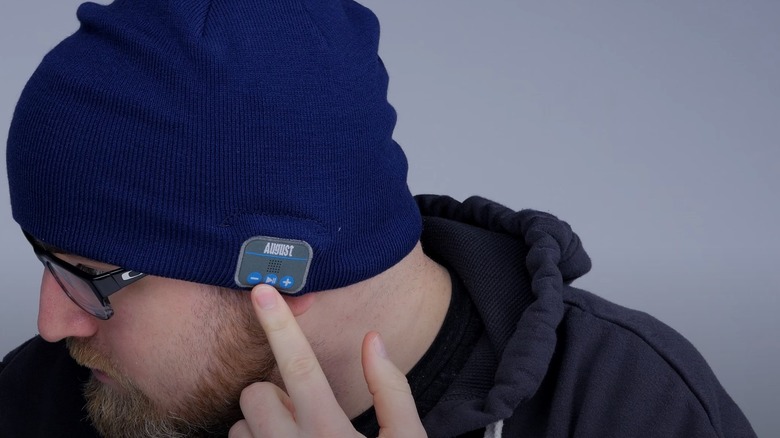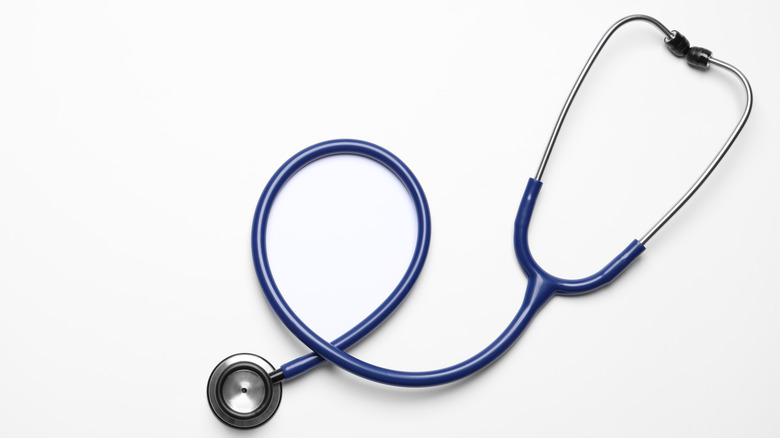7 Best Uses For Old Headphones
Headphones and other personal listening devices are so ubiquitous now that it's easy to forget that wasn't always the case. In fact, the era of personal audio is so recent that most of it has occurred in living memory. For years after the emergence of the original Walkman, headphones were a status symbol. Later, they were the status quo.
Headphones remain an incredibly useful piece of technology, but they're easily forgotten. They can even become something of an inconvenience if you're not careful. That's because for decades, every time you bought a Walkman, Discman, MP3 player, or a new phone you were given a pair of headphones. Add those to the pairs you have intentionally purchased, the ones you've been given as gifts, and the ones you've been handed as corporate swag at the yearly holiday party... you get the idea. Most of us are awash in more old headphones than we know what to do with.
Worse, most modern electronics don't even come with a headphone jack anymore. Pretty soon, you might need to find some alternate uses for your old headphones, lest they become entirely useless. Luckily, we've got a handful of suggestions that should keep your old tech out of the recycling for a little while longer.
Lavalier microphone
Anyone who spends any amount of time looking into purchasing audio equipment knows there are many different types of microphones. However, when it really comes down to it, however, there are two main types of microphones you're likely to encounter. The first is the stage mic. You see them on microphone stands, cables trailing as your favorite frontman paces beneath the spotlight. The other you're likely to not even notice.
That's sort of the point of the lavalier microphone, otherwise known as a collar mic. They're subtle and unobtrusive, meant to slip seamlessly into your clothing and pick up your voice without otherwise impairing your ability to maneuver. You see these on talk shows and news broadcasts. And if you've got an old pair of earbuds, like the kind that sometimes come with a new cell phone, you can make one of your very own with a few simple steps.
The headphones you typically get with a mobile device are intended for making calls, so they usually have a microphone built-in. If that's the case, most of the hard work has already been done for you. Getting your lav mic is a simple matter of snipping away the unneeded earbuds and using the microphone to record your voice. According to Digital DJ Tips, something similar can be done even if your headphones don't have a built-in microphone by taking advantage of the relative technical similarities between speakers and microphones. Check out their project page for full instructions.
DIY Speakers
As long as your old headphones are still functional, you can convert them into a more conventional pair of speakers with just a handful of household items. There are multiple ways to go about this, ranging from wildly low-tech to moderately more advanced.
The low-tech solution isn't necessarily pretty, but it is effective and infinitely customizable. The idea is to lean into the native audio output of your headphones and amplify the volume. The folks over at How Stuff Works suggest using plastic, paper, or cardboard cups. A clean Altoids tin also works to channel the sound from your old headphones into ambient audio. If you have access to a 3D printer, there are countless printable amplifiers you can manufacture for pennies.
If you're a little more technologically inclined, there is a more advanced headphone-to-speaker option. DIY Perks has a detailed video outlining how to convert some wireless earbuds into a paired set of stereo speakers. Even broken headphones will likely work for this project, as the parts that usually break aren't important for our speakers. You're going to have to do some dismantling and soldering, but when you're finished, you'll have a set of wireless speakers with directional sound. Not bad for some old tech you were going to throw away.
Make them Bluetooth capable
Speaking of wireless listening, that isn't limited to our at-home Bluetooth speakers or modern earbuds. You can breathe new life into a pair of vintage wired headphones by giving them a Bluetooth upgrade. Cutting the cord and transforming your old headphones into a wireless set with a retro aesthetic is easier than ever thanks to affordable Bluetooth receivers. (Cutting the actual cord is optional.)
The trick is to get your old headphones to accept a Bluetooth signal instead of, or in addition to, the wired signal it's used to. The folks over at Lifehacker covered a project by Instructables user andrewwayneisbored which started with an old pair of Sound Design headphones picked up at a flea market.
Wayne pried open the headphones and added a Bluetooth receiver he purchased online. This is where a vintage set of over-the-ear headphones will really come in handy. The excess space available in older tech is perfect for jamming extra functionality inside. By the end, Wayne had a pair of headphones that looked like they came from an estate sale but were capable of switching back and forth between wired and wireless signals as needed. With a few simple tools and the ability to follow directions, you could have the perfect one-stop shop for all of your listening needs.
Tech-inspired accessories
Your old headphones might be happiest if you can find a way to retain their intended function and keep the tunes pumping for years to come. Sometimes, however, our old tech is too damaged or too difficult to repair and we have to settle for style over substance.
Countless creators have looked to the humble headphones for aesthetic inspiration, and you too can join the crush of creativity by turning your old headphones into something which is seen but not heard. The long cord of earbuds or over-the-ear headphones can be woven into a stylish bracelet or necklace (via DIY Worthy). Jewelry makers have turned earbuds and cables into earrings that are equal parts cyberpunk and retro, as seen on the Daily Dot.
A pair of old foam headphones could easily be turned into a hipster headband by simply snipping off the cord, and if you put them over your ears, they serve the double duty of discouraging unwanted public conversations. Avoiding awkward social interactions is reason enough to keep just about anything around.
Tuck them into your suitcase
Remember the public outcry when Apple ditched the headphone jack and started offering expensive wireless headphones? Whatever ill will we once had faded away pretty quickly and Apple's AirPods became the product to have. Other phone manufacturers shortly followed suit and the era of wireless headphones was ushered in (via Wired). All things considered, it has worked out pretty well. Most of us have moved on from the classic wired headphones of yesteryear and adopted wireless headphones in some form or another. Unfortunately, some parts of the world haven't gotten the memo. Namely, the airline industry.
Traveling with your wireless headphones is a recipe for disaster, as you realize too late that they won't connect to the in-flight entertainment system. You're left with a couple of choices, overpay for a pair of cheap headphones at the terminal shop or watch airplane movies silently with subtitles like it's 1918.
Luckily, some airlines are in the process of adding Bluetooth capability to their in-flight entertainment systems, so there's a solution on the horizon (via Trip Savvy). In the meantime, keeping an old pair of wired headphones in your travel bag is a good way to prevent a boring flight and give your old headphones their day in the sun all at the same time.
Make a headphone hat
When cold weather sets in, many of us begin wearing more hats than we're used to. They're good for keeping your ears warm, but they can fight for real estate on your head if you're not an earbuds kind of person.
Incorporating a pair of old headphones into a hat or beanie is a great way to eliminate at least one piece of competing headgear. This is, by its very nature, a DIY project, and your result is likely to be as unique as your tastes. The central idea, however, is the same. You want to get the working bits of your old headphones into the confines of a hat so that they sit easily over your ears while wearing it.
One of the easiest ways to pull this off is to use a pair of over-the-ear headphones as your starting point. The comparatively large speakers are easier to maneuver inside the fabric and are more likely to overlap with your ears when worn. You'll want to get rid of the headband and slip the speakers into place by cutting into the fabric of your chosen hat. Secure the speakers in place and sew everything back together. Now you can wear your headphones and your hat at the same time. In fact, you don't have a choice (unless you make the headphones removable for cleaning purposes). Check out this project from tropicalfrost on Instructables for full instructions.
DIY stethoscope
This particular headphone upcycling project is likely to be more entertaining than effective for most of us. If you're the kind of person who actually needs a functioning stethoscope, you're probably also the kind of person who has a real one and doesn't need to MacGyver something out of paperclips and chewing gum.
The headband from a pair of over-the-ear headphones offers the same basic shape as a stethoscope and will easily attach to the rest of your device. For the remainder, you'll need a length of tubing long enough to reach for your ears to your hypothetical patient's chest. Use a y-shaped connector to branch the tubing toward each ear, affixing it to your headphone frame. On the distant end of the tubing, connect a bottle cap or other small dish-shaped object. This will gather sound and funnel it through the tubing toward the ears (via WikiHow). You're unlikely to get hospital-quality sound out of your makeshift stethoscope, but it could pick up a beat or two in a pinch.
Once you've found uses for all your old headphones, you can start working on reusing old computer keyboards, iPods, and video game controllers.
